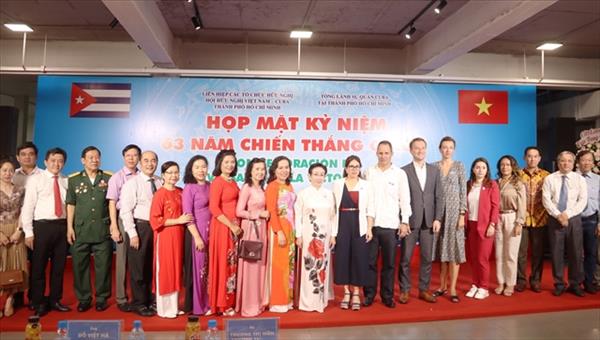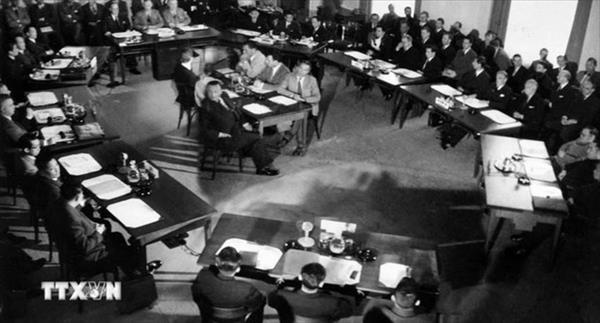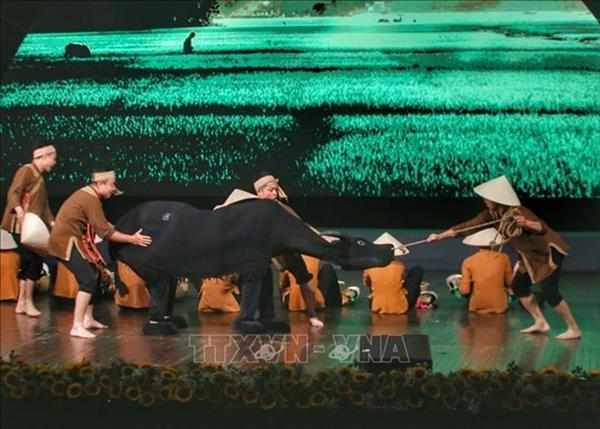Hanoi, January 29 (VNA) - Deputy Minister of Education and Training Nguyen Vinh Hien spoke with Voice of Vietnam (VOV) about changes to the education system, especially for high schools.
* What are the new points of this new scheme on the national education system?
New changes will be made at different education levels. In high-schools, particularly, students will be subject to three educational orientations: general research, technology-engineering and gift-based.
Regarding vocational training, we will combine the current four different vocational training types and narrow them down to just two.
Studying time at universities would also be changed, shortened to three or four years instead of four or six years like now. As there have been no students being able to finish the doctorate degree within two years, we proposed to extend the official time to three or four years.
The building of the scheme was based on the current educational system and experiences from other countries with advanced educational foundations. The scheme will help our educational system sync with that of other countries as well as ensure the educational connectivity between Vietnam and the world.
* What is the road map to prepare for the implementation of the scheme?
The new national education system should be built up on the existing infrastructure and teaching staff. Teachers who are already working will receive further training to be able to catch up with the changes.
What's important is that we have to rewrite the textbooks in order to meet the demands of the new teaching and human resource standards, switching from the knowledge-based educational system to one that aims to develop the capabilities and personalities of the students.
* What are the differences between the proposed educational orientations for high-schoolers and the student group division system (students are divided into classes based on their choices of subjects) which are still being applied at schools?
What they share in common is that both aim to classify students.
However, they definitely are not the same thing. If a student studies in a division group, they have to study all the subjects required by that particular group and are not allowed to switch from group to group.
The students are stuck in that group from 10th grade to 12th grade.
But if the student follows the new orientations, it will be a lot more flexible for them. Students who choose different orientations can still study particular subjects together. In case the students wish to switch to another orientation, they can just change some subjects instead of the whole curriculum like in the group division system.
The current system so far was deemed a failure as educational institutions didn't change the conventional ways of examination and student assessment methods in sync with the implementation of the group division system.
The Ministry of Educational and Training (MoET) would require all localities and schools to make those necessary changes in line with this new orientation system.
* Will the orientation system be piloted first?
No. We will carry it out at all localities at the same time but on various levels. The MoET will implement the scheme as soon as it is approved by the Government.
* What are the new points of this new scheme on the national education system?
New changes will be made at different education levels. In high-schools, particularly, students will be subject to three educational orientations: general research, technology-engineering and gift-based.
Regarding vocational training, we will combine the current four different vocational training types and narrow them down to just two.
Studying time at universities would also be changed, shortened to three or four years instead of four or six years like now. As there have been no students being able to finish the doctorate degree within two years, we proposed to extend the official time to three or four years.
The building of the scheme was based on the current educational system and experiences from other countries with advanced educational foundations. The scheme will help our educational system sync with that of other countries as well as ensure the educational connectivity between Vietnam and the world.
* What is the road map to prepare for the implementation of the scheme?
The new national education system should be built up on the existing infrastructure and teaching staff. Teachers who are already working will receive further training to be able to catch up with the changes.
What's important is that we have to rewrite the textbooks in order to meet the demands of the new teaching and human resource standards, switching from the knowledge-based educational system to one that aims to develop the capabilities and personalities of the students.
* What are the differences between the proposed educational orientations for high-schoolers and the student group division system (students are divided into classes based on their choices of subjects) which are still being applied at schools?
What they share in common is that both aim to classify students.
However, they definitely are not the same thing. If a student studies in a division group, they have to study all the subjects required by that particular group and are not allowed to switch from group to group.
The students are stuck in that group from 10th grade to 12th grade.
But if the student follows the new orientations, it will be a lot more flexible for them. Students who choose different orientations can still study particular subjects together. In case the students wish to switch to another orientation, they can just change some subjects instead of the whole curriculum like in the group division system.
The current system so far was deemed a failure as educational institutions didn't change the conventional ways of examination and student assessment methods in sync with the implementation of the group division system.
The Ministry of Educational and Training (MoET) would require all localities and schools to make those necessary changes in line with this new orientation system.
* Will the orientation system be piloted first?
No. We will carry it out at all localities at the same time but on various levels. The MoET will implement the scheme as soon as it is approved by the Government.
VNA/VNP

















